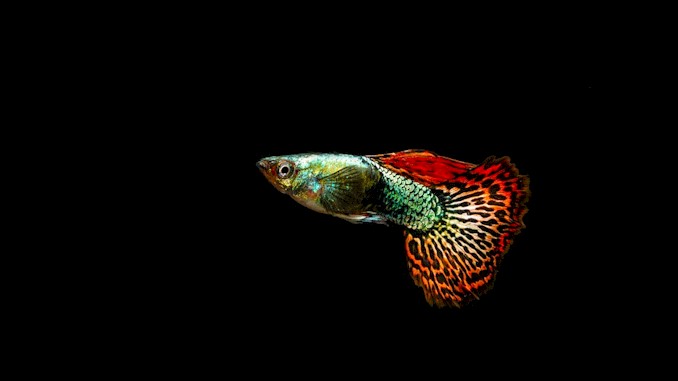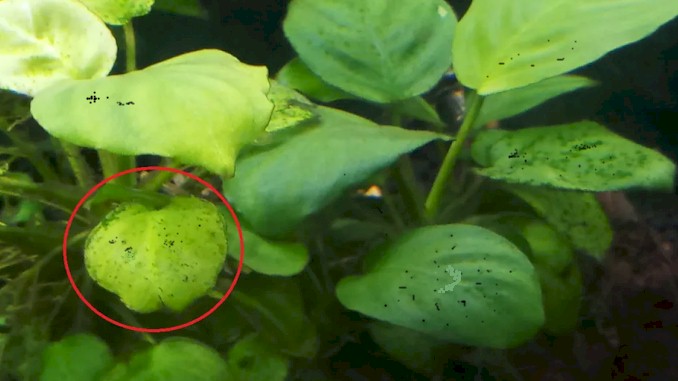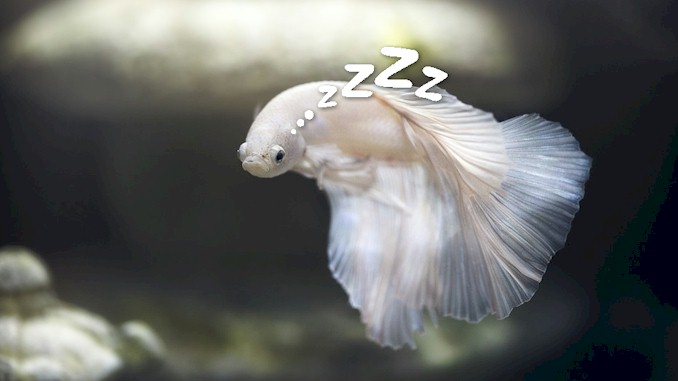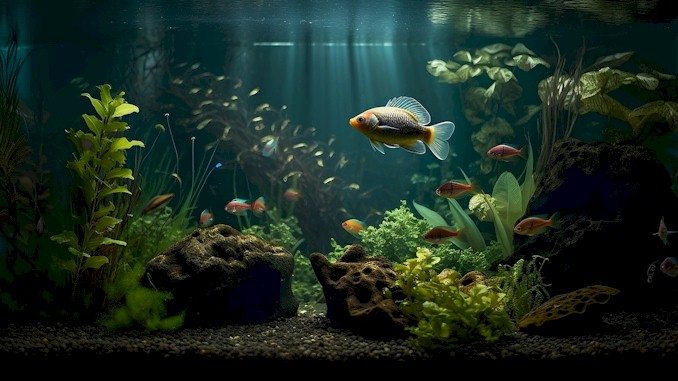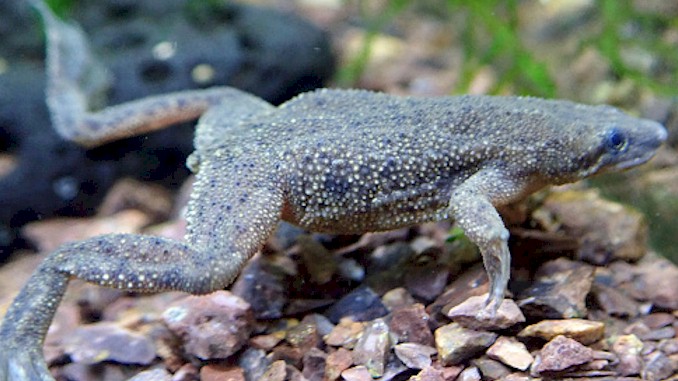The Science Behind Guppy Color Changes
If you have guppies in your aquarium, you might have noticed that they sometimes change their color. This can be a fascinating phenomenon, but also a worrying one. Why do guppies change color? Is it normal or a sign of trouble? In this blog post, I will explain the main reasons why guppies change color and what you can do to prevent or treat it. I have been keeping guppies for over 10 years and I have learned a lot about their behavior and health. I will share with you my tips and tricks to keep your guppies happy and colorful.
Guppies change color for various reasons, such as adapting to a new environment, coping with inadequate water parameters or poor water condition, experiencing stress or exposure to sunlight, suffering from infections or bullying, lacking proper nutrition, being pregnant (females only), or displaying mating behavior (males only). Some of these reasons are harmless and temporary, while others are harmful and require intervention.
In this blog post, I will explain each of these reasons in more detail and give you some practical advice on how to prevent or treat them. I will also tell you how to recognize the signs of color change in your guppies and what to do if you notice any unusual changes. By the end of this post, you will have a better understanding of why guppies change color and how to keep them healthy and vibrant. So, let’s get started!
How do Guppies Get Their Color
Guppies get their color through a combination of genetic factors and environmental influences. The genes that determine coloration are passed down from the parents to their offspring, but the specific colors and patterns that are expressed can be influenced by environmental factors such as diet, lighting, and water quality.
There are many different color and pattern variations that can be seen in guppies, including solid colors, metallic sheens, and intricate patterns. These variations are the result of different combinations of pigment cells called chromatophores, which are located in the skin and scales of the fish. The three main types of chromatophores are melanophores, which produce black and brown pigments; xanthophores, which produce yellow and orange pigments; and iridophores, which produce reflective and iridescent pigments.
In addition to genetics and chromatophores, environmental factors can also influence guppy coloration. For example, a diet that is rich in carotenoids (such as those found in certain types of algae) can enhance the expression of orange and red pigments in guppies. Adequate lighting is also important for maintaining vibrant colors, as dim lighting can cause colors to appear dull and washed out.
Overall, guppy coloration is a complex and fascinating phenomenon that is influenced by a variety of genetic and environmental factors. By understanding these factors, we can help to promote healthy and vibrant guppy populations in our aquariums.
What Makes Guppies Look Brighter and More Colorful
There are several factors that can make guppies look brighter and more colorful. The most important factor is good nutrition. Guppies require a varied diet that is high in protein and essential nutrients, such as vitamins and minerals, to maintain their bright colors. Feeding them a high-quality diet that includes live or frozen foods, such as brine shrimp or bloodworms, can help to enhance their natural colors and keep them looking vibrant.
Lighting is another important factor that can influence guppy coloration. Bright and properly positioned lighting can help to bring out the full spectrum of colors in your guppies, while dim lighting can cause colors to appear washed out and muted. It’s important to choose a lighting system that is appropriate for the size of your aquarium and the specific needs of your guppies.
Water quality is also critical for maintaining bright and colorful guppies. Poor water quality can cause stress and illness, which can lead to dull and faded colors. Maintaining proper water chemistry, including pH, temperature, and hardness, is important to keep your guppies healthy and vibrant.
Finally, genetics play a significant role in determining the coloration of guppies. Selectively breeding guppies for desirable color traits can produce offspring with brighter and more vivid colors. However, it’s important to remember that genetic manipulation should only be done responsibly and with the health and well-being of the fish in mind.
In summary, providing a varied and nutritious diet, proper lighting, good water quality, and responsible breeding practices can all help to enhance the natural colors of your guppies and keep them looking bright and beautiful.
Guppies Change Color Because Of New Environment
One of the primary reasons why guppies change color is because of a new environment. Guppies are very adaptable fish that can evolve rapidly in response to different environmental conditions. However, this does not mean that they can tolerate sudden or drastic changes in their surroundings. If you move your guppies to a new tank or add new fish to their existing tank, you need to acclimate them properly to avoid stress and color loss.
Acclimating your guppies means gradually introducing them to the water parameters and temperature of their new tank. This will help them adjust their metabolism and immune system without shocking them. Here are some steps you can follow to acclimate your guppies:
- Prepare your new tank by filling it with dechlorinated water and adding a filter, heater, plants, and decorations. Make sure the water temperature is between 78-86 degrees Fahrenheit, which is the optimal range for guppies.
- Test the water parameters of both new and old tanks, using a test kit. You want to match the pH, hardness, ammonia, nitrite, and nitrate levels as closely as possible. If there are significant differences, you may need to adjust them using chemicals or natural methods.
- Place your guppies in a plastic bag or container with some water from their old tank. Seal it tightly and float it on the surface of the new tank for 15 minutes. This will allow them to get used to the temperature difference.
- After 15 minutes, open the bag or container and add a small amount of water from the new tank. Repeat this every 5 minutes until you have doubled or tripled the volume of water in the bag or container.
- Carefully net your guppies out of the bag or container and release them into their new tank. Do not pour any water from the old tank into the new one as it may contain contaminants or pathogens.
- Monitor your guppies for any signs of stress or color change. If they seem healthy and happy, you have successfully acclimated them.
Acclimating your guppies may take some time and effort, but it is worth it in the long run. By doing so, you will prevent stress-induced color change and ensure that your guppies thrive in their new environment.
Guppies Change Color Because Of Poor Water parameters And Condition
Another reason why guppies change color is because of inadequate water parameters or poor water condition. Guppies are hardy fish that can tolerate a wide range of water conditions, but they still have some specific requirements that need to be met for their health and well-being. If the water parameters or condition are too far from their ideal range, guppies may experience stress, disease, or color loss.
Water parameters refer to the chemical and physical characteristics of the water, such as temperature, pH, hardness, alkalinity, ammonia, nitrite, nitrate, etc. Water condition refers to the overall quality and cleanliness of the water, such as clarity, odor, dissolved oxygen, organic waste, etc. Both water parameters and condition affect the guppies’ metabolism, immune system, behavior, and coloration.
The following table shows the ideal range of some important water parameters for guppies:
| Water Parameter | Ideal Range |
|---|---|
| Temperature | 72-82°F (22-28°C) |
| pH | 6.8 – 7.8 |
| GH (General Hardness) | 6 to 8 dGH or 100-140 ppm |
| KH (Carbonate Hardness) | 4 to 8 dKH or 70 to 140 ppm |
| Ammonia | 0 ppm |
| Nitrite | 0 ppm |
| Nitrate | <20 ppm |
To maintain these optimal water parameters for your guppies, you need to do the following:
- Test your tap water and aquarium water regularly using a test kit. You can buy a liquid test kit or a test strip kit from Amazon.com. Follow the instructions carefully and compare the results with the ideal range.
- Adjust your tap water before adding it to your aquarium. If your tap water has a different pH or hardness than your aquarium water, you need to use chemicals or natural methods to match them. For example, you can use pH buffers or peat moss to lower pH; baking soda or crushed coral to raise pH; Epsom salt or calcium chloride to increase hardness; distilled water or reverse osmosis (RO) water to decrease hardness.
- Perform regular partial water changes. This is one of the most effective ways to keep your aquarium water clean and stable. You should change about 25% of your aquarium water every week using a gravel vacuum and a bucket. Make sure you use dechlorinated tap water that matches your aquarium water in temperature and parameters.
- Use a filter that suits your tank size and bioload. A filter helps remove solid waste and toxins from your aquarium water using mechanical, biological, and chemical filtration media. You should choose a filter that can cycle at least three times the volume of your tank per hour. For example, if you have a 20-gallon tank, you need a filter that can cycle at least 60 gallons per hour. You should also clean your filter media regularly to prevent clogging and reduce efficiency.
- Avoid overfeeding and overstocking your guppies. Overfeeding and overstocking can lead to excess waste production, which can pollute your aquarium water and cause ammonia spikes. Ammonia is very toxic to guppies and can cause stress, disease, or death. You should feed your guppies only what they can eat in two minutes twice a day. You should also keep one inch of fish per gallon of tank capacity as a general rule.
By following these steps, you will be able to maintain optimal water parameters and condition for your guppies. This will help them stay healthy and colorful in their aquatic home.
Guppies Change Color Because Of Stress and Bullying
Guppies are social fish that enjoy living in groups, but sometimes they can exhibit aggressive or bullying behavior towards each other or other fish. This can cause stress and injury to the victims, and affect their health and coloration. Therefore, it is important to know how to reduce stress and bullying among your guppies.
Some of the common causes of stress and bullying among guppies are
- Mating behavior: Male guppies may chase and harass female guppies or other males to show dominance or attract mates. This can be stressful for the females or the weaker males, especially if they are outnumbered or have no place to hide.
- Competition for food: Guppies may compete for food with each other or with other fish, especially if there is not enough food available or if the food is distributed unevenly. This can lead to nipping, chasing, or fighting over food resources.
- Incompatible tank mates: Guppies may not get along with some other fish species that have different temperaments, sizes, or dietary needs. Some fish may prey on guppies or nip at their fins, while others may be too shy or sensitive to cope with guppy activity.
- Lack of space: Guppies need enough space to swim freely and explore their environment. If the tank is too small or overcrowded, guppies may feel cramped and stressed. They may also become territorial and defend their space from intruders.
To reduce stress and bullying among your guppies, you can try these solutions
- Maintain a balanced sex ratio: A good rule of thumb is to keep one male guppy for every two female guppies. This will reduce the mating pressure on the females and prevent excessive aggression among the males. You can also separate males from females if you don’t want them to breed.
- Provide enough food: Make sure you feed your guppies a varied diet that meets their nutritional needs. You can use flakes, pellets, frozen, or live foods. Feed them only what they can eat in two minutes twice a day. You can also use multiple feeding stations to ensure equal distribution of food.
- Choose compatible tank mates: Avoid keeping guppies with fish that are too large, aggressive, or fin-nipping. Some examples of incompatible tank mates are angelfish, barbs, cichlids, goldfish, and bettas. Some examples of compatible tank mates are tetras, rasboras, mollies, platies, and swordtails, you can read another article about this topic in detail on this website.
- Provide enough space: The minimum tank size for keeping guppies is 5 gallons, but larger tanks are better for reducing stress and aggression. You should also avoid overstocking your tank with too many fish. A general rule is one inch of fish per gallon of water capacity.
- Offer hiding spaces: Guppies need places where they can hide from predators or bullies or rest when they are stressed or tired. You can use plants, rocks, driftwood, caves, or ornaments to create hiding spaces in your tank. You can also use floating plants to provide shade and cover for your guppies .
By following these tips, you will be able to reduce stress and bullying among your guppies. This will help them stay happy and colorful in their aquatic home.
Guppies Change Color Because Of Infections
One of the possible reasons why your guppies change color is that they are infected by bacteria, parasites, or fungi. These infections can cause various symptoms, such as white spots, redness, swelling, fin rot, mold, and loss of appetite. If left untreated, these infections can be fatal for your guppies. Therefore, it is important to know how to identify and treat them as soon as possible.
Bacterial Infections
Bacterial infections are caused by harmful bacteria that invade the guppy’s body through wounds, poor water quality, or stress. Some common bacterial infections that affect guppies are:
- Fin and tail rot: This infection usually starts at the edges of the fins and then spreads to the whole fin. The fin will look ragged and torn. The affected area may also change color to be darker, brown, white, or grey. The guppy may also lose its appetite and become lethargic.
- Dropsy: This infection causes fluid accumulation in the guppy’s body cavity. The guppy will look bloated and swollen. Its scales will stick out like pinecones. Its eyes may also bulge out. The guppy will have difficulty swimming and breathing.
- Hexamitiasis: This infection affects the guppy’s intestines and causes weight loss, diarrhea, white feces, and loss of color. The guppy may also have ulcers on its skin.
To treat bacterial infections in guppies, you need to isolate the infected fish from the healthy ones in a quarantine tank. You also need to improve the water quality by changing it frequently and adding aquarium salt or stress coat. You can use antibiotics such as tetracycline or erythromycin to treat fin rot and hexamitiasis. For dropsy, you can use kanamycin or metronidazole. However, dropsy is often irreversible and has a low survival rate.
Parasitic Infections
Parasitic infections are caused by tiny organisms that attach themselves to the guppy’s body or enter its internal organs. Some common parasitic infections that affect guppies are:
- Ich: This infection is caused by a protozoan parasite called Ichthyophthirius multifiliis. It causes white spots on the fish’s body that look like grains of salt. The spots may also appear on the fins and eyes. The guppy will scratch itself against objects in the tank and become restless.
- Velvet: This infection is caused by another protozoan parasite called Oodinium pilularis. It causes a fine gold or rust-colored dust on the fish’s body that looks like velvet. The fish will also scratch itself against objects in the tank and become restless.
- Gill flukes: These are flatworms that attach themselves to the gills of the fish. They cause inflammation and damage to the gill tissue. The fish will breathe rapidly and gasp for air at the surface of the water.
Treat parasitic infections
To treat parasitic infections in guppies, you need to isolate the infected fish from the healthy ones in a quarantine tank. You also need to improve the water quality by changing it frequently and adding aquarium salt or stress coat. You can use anti-parasitic medications such as malachite green, methylene blue, or formalin to treat ich and velvet. For gill flukes, you can use praziquantel or levamisole. You should also raise the temperature of the water gradually to speed up the life cycle of the parasites and kill them faster.
You should continue the treatment until all signs of infection are gone. This may take several days or weeks depending on the type and severity of the infection. You should also monitor your guppies for any signs of stress or side effects from the medications.
Fungal Infections
Fungal infections are caused by fungi that grow on the guppy’s skin or fins. They usually occur when the guppy is injured, stressed, or has a weak immune system. Some common fungal infections that affect guppies are:
- Mold: This infection causes white cotton-like growths on the guppy’s body or fins. The growths may also have a greenish tint due to algae. The guppy may lose its appetite and become inactive.
- Saprolegniasis: This infection causes grayish-white patches on.
- the guppy’s skin or fins. The patches may also have a reddish border. The guppy may lose its appetite and become inactive.
To treat fungal infections in guppies, you need to isolate the infected fish from the healthy ones in a quarantine tank. You also need to improve the water quality by changing it frequently and adding aquarium salt or stress coat. You can use anti-fungal medications such as malachite green, methylene blue, or povidone iodine to treat mold and saprolegniasis . You should also remove any dead or decaying matter from the tank that could harbor fungi.
You should continue the treatment until all signs of infection are gone. This may take several days or weeks depending on the type and severity of the infection. You should also monitor your guppies for any signs of stress or side effects from the medications.
In conclusion, color change in guppies can be a sign of bacterial, parasitic, or fungal infections that can be harmful for your fish. Therefore, you should always check your guppies for any symptoms of infection and treat them promptly with appropriate medications. You should also maintain good water quality and hygiene in your tank to prevent infections from occurring or spreading.
Guppies Change Color Because Of Pregnancy and Mating Behavior
As we’ve discussed, guppies can change color for a variety of reasons, including pregnancy and mating behavior. In this section, we’ll explore how to provide proper nutrition and care for these special populations of guppies to ensure that they remain healthy and vibrant.
Pregnant female guppies require a diet that is high in protein and essential nutrients to support the growth and development of their offspring. Commercially available guppy-specific diets are readily available and can provide all the necessary nutrients for your pregnant female. Live or frozen foods such as daphnia, brine shrimp, and bloodworms are also excellent sources of protein that can be fed to pregnant guppies. Keep in mind that pregnant guppies should be fed smaller, more frequent meals to avoid overfeeding and ensure that they are able to digest their food properly.
It’s also important to provide your pregnant guppies with a stress-free environment, as stress can lead to complications with pregnancy and childbirth. Avoid handling or disturbing your pregnant guppies, and provide plenty of hiding spots and plants for them to rest and relax. A well-maintained aquarium with proper filtration and water quality can also help to reduce stress and promote good health.
Mating male guppies, on the other hand, require a diet that is high in fiber and low in protein to support their mating behavior. Too much protein can lead to aggressive behavior and competition among males, which can ultimately lead to stress and illness. Vegetables such as blanched spinach and peas can provide a good source of fiber for your male guppies, and commercially available herbivore diets are also available.
It’s also important to provide your male guppies with a spacious and well-filtered aquarium to accommodate their mating behavior. Male guppies may become territorial during mating, so providing plenty of hiding spots and plants can help to reduce aggression and stress.
By providing proper nutrition and care for your pregnant and mating guppies, you can help to ensure that they remain healthy and vibrant, and continue to display their beautiful colors for years to come.
Why Is My Guppy Turning Black
Guppy fish will turn black to express something. This can include aggression, stress, establishing pecking order, ready to mate and also that they are sick or not feeling well.
The first thought when you see your guppy turning black is are they ill? Most of the time a guppy that has turned black is not ill it is just trying to show one of the following
- Aggression : A guppy can change the color of their eyes to black to show they are feeling aggressive
- Stress : A guppy can show that they are stressed by changing their body to a black color
- Pecking Order : If new fish have just been added in to the tank the guppies will have to re-establish a pecking order
- Illness : Sadly an illness can also cause your guppy fish to change color.
Why Is My Guppy Turning White
Guppies turn white as a result of a disease, such as Ich, Dropsy, and Hexamitiasis. Whitish colors could also indicate a bacterial infection, as in fin and tail rot, or mold accumulation, particularly in poorly maintained tanks.
Why Is My Guppy’s Gills Turning Red
Although the gills are usually reddish because they are engorged with blood, an intense red coloration can mean something else. The red gills could be as a result of ammonia, nitrate or carbonate poisoning. It can also cause the gills to be swollen, making the guppy gasp for air at the water surface.
Why Is My Guppy Turning Yellow
They can turn yellow due to lack of heat. If you do not have a heater your guppies will turn yellow. You deal with it by getting a heater.

